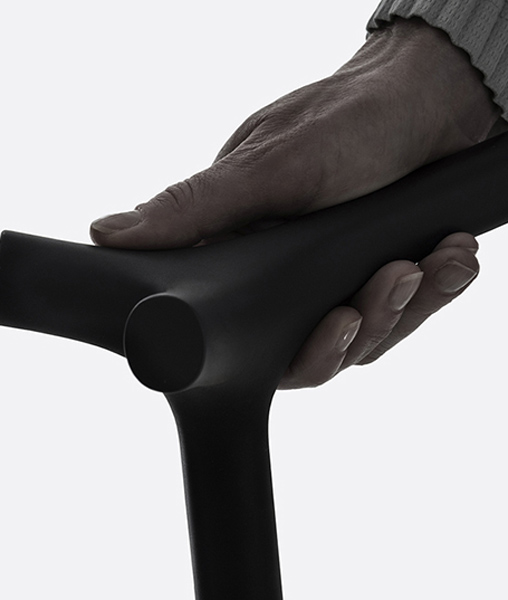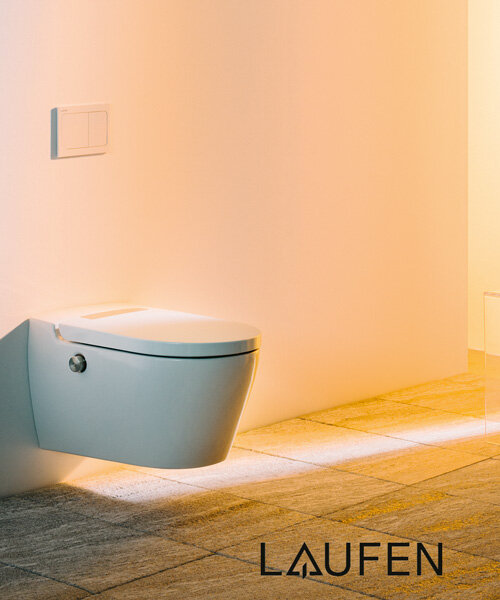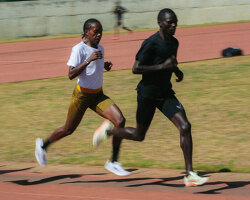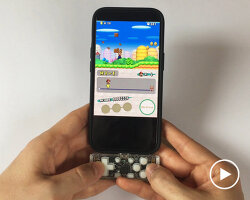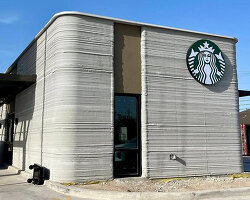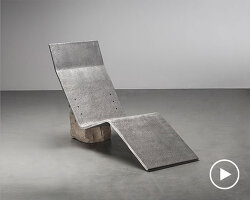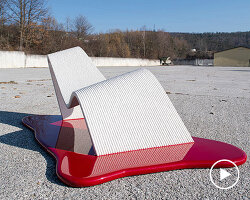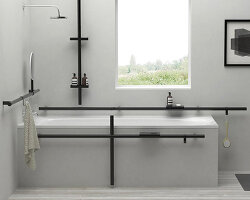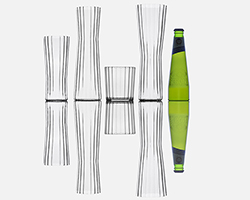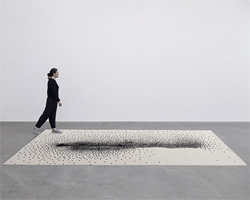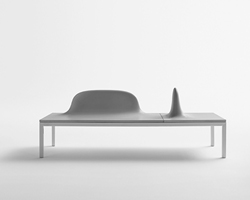shiro studio’s ‘enea walking stick’ is the result of comprehensive research and a collaborative project focused on developing an innovative solution for the stigma and flaws often associated with the medical aid. ‘enea’ invites its users to establish an emotional connection with the walking stick, seen as a functional, proud and contemporary design statement rather than an unavoidable manifestation of their physical limitations. the 3D printed device proposes a range of design innovations to improve comfort and handling whilst promoting a contemporary aesthetic and manufacturing technique.
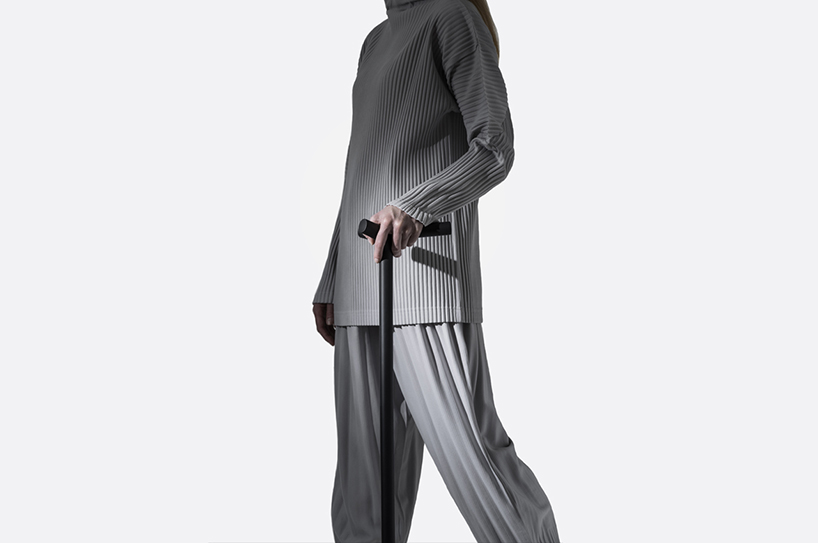
‘enea’ challenges the stigma often associated with conventional walking sticks
‘enea’ is the first fully 3D printed walking stick. the three-axis handle geometry allows the stick to rest vertically on the floor without any additional support. this in turn allows the user to engage in parallel activities without the worry of the stick falling down and having to reach to floor level – a particular problematic scenario for elderly or mobility challenged users.
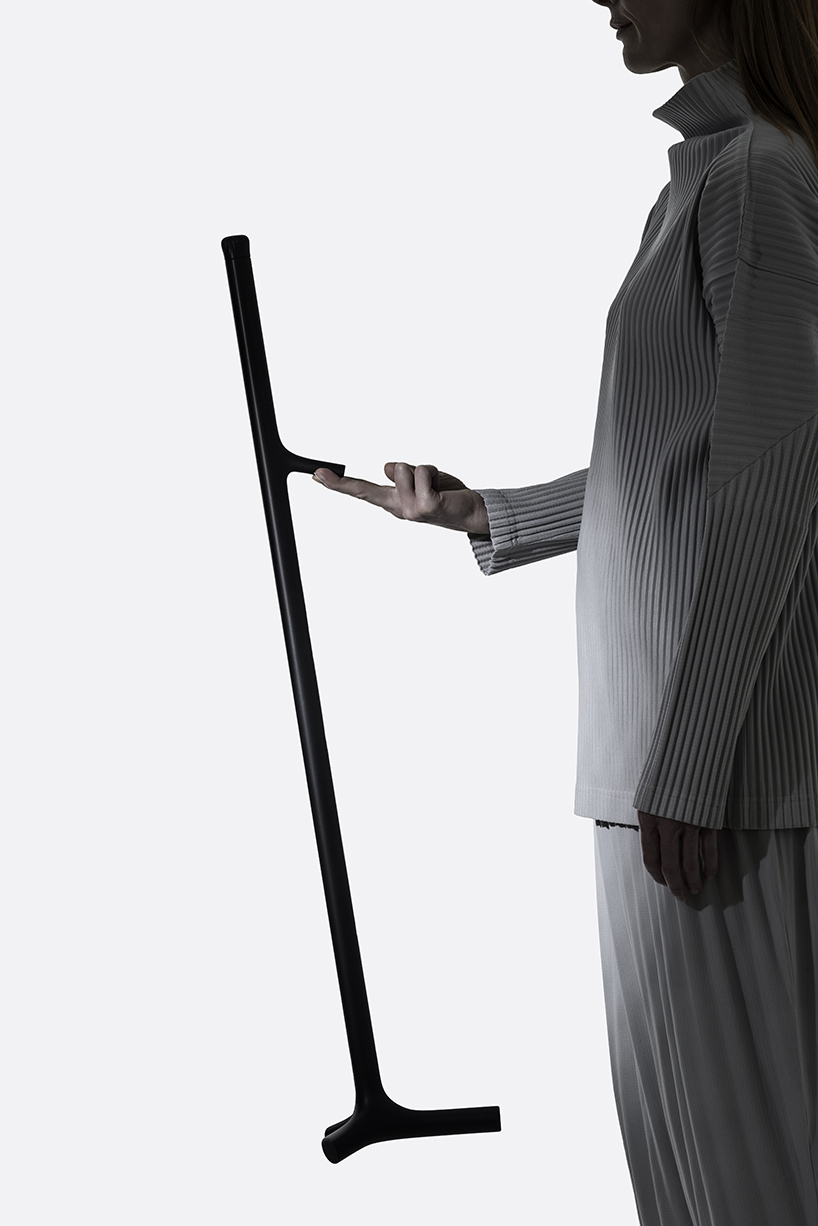
the walking stick offers an array of innovations that allows its users greater flexibility
the handle design also ensures a safe, stable resting balance when leaning onto walls, due to a two-point contact. the handle has also been designed to offer a higher degree of grip comfort, reducing hand ligament load stress by offering a wider, ergonomic surface which can be held in two different positions. a small appendix in the lower section further increases the flexibility of safely parking the stick onto horizontal surfaces like desks or shopping counters, enabling its users to always have the stick close to them, freeing them to use both hands.
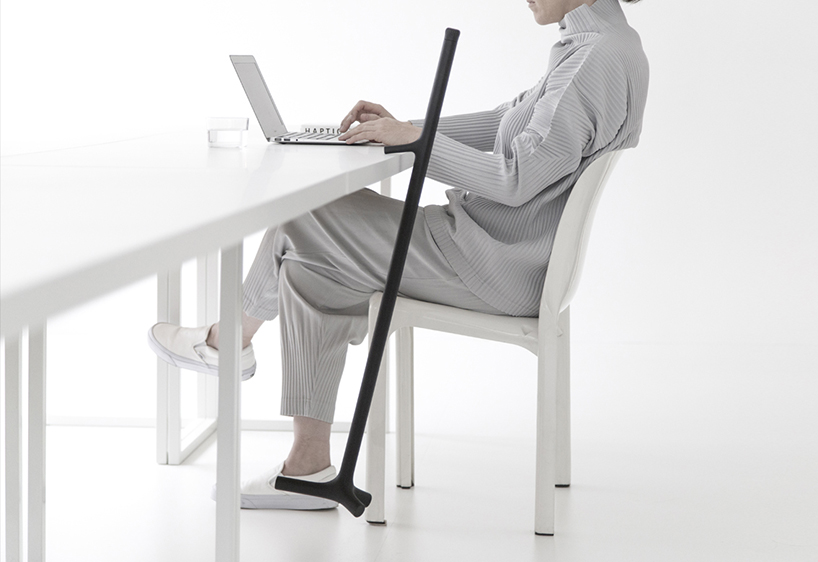
a small appendix positioned in the lower section allows the stick to safely balance off working surfaces
in order to keep the stick as lightweight as possible, without compromising its structural integrity, an internal porous structure, mimicking the trabecular bone tissue, has been developed exclusively for shiro studio by mhox design and engineer vincenzo reale of arup, using generative design. ‘i have always been fascinated by medical design’, states andrea morgante, founder of shiro studio. ‘for many years whilst studying architecture, I volunteered as an emergency ambulance medical technician. this experience exposed me to the functional beauty of many devices on board ambulances. since those times I have always looked for opportunities to improve user experience of healthcare aids through mindful design’.
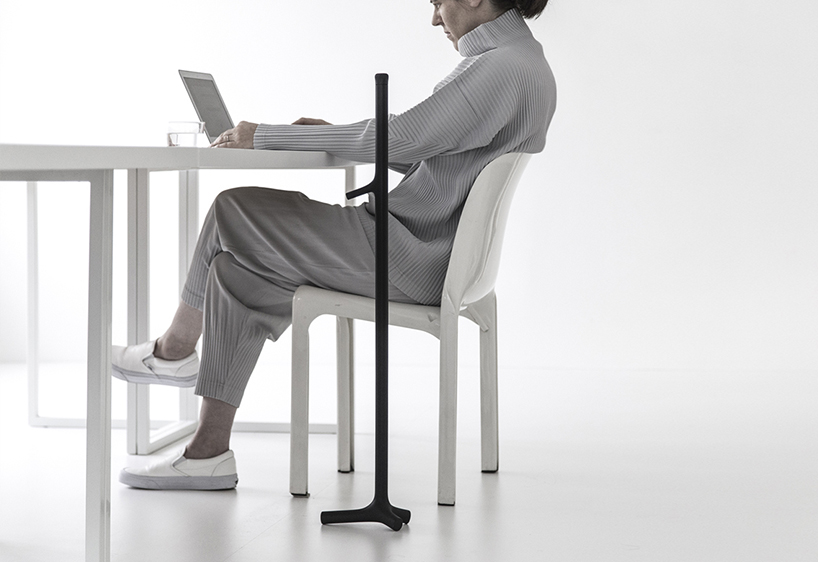
the tri-axis handle allows the stick to rest vertically without any need for vertical surfaces or wall to rest on
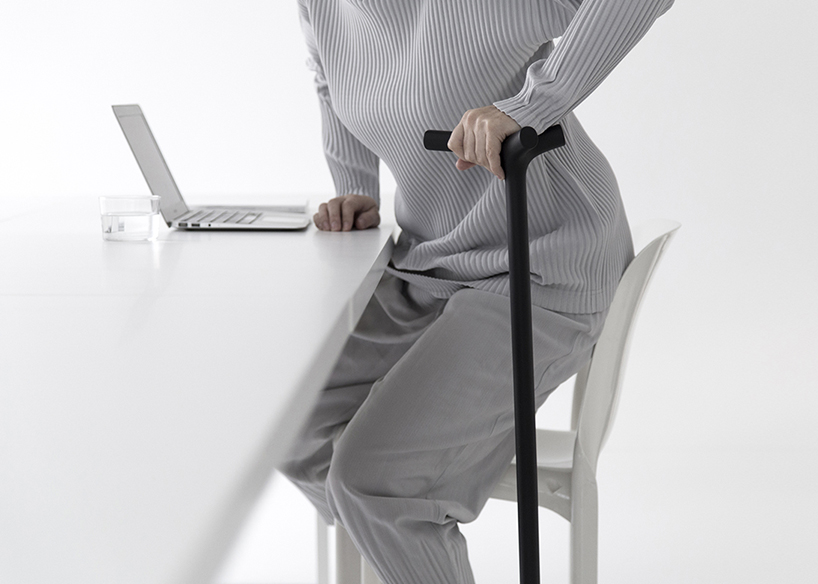
the internal bone-like structure delivers structural efficiency without any compromise on the overall weight
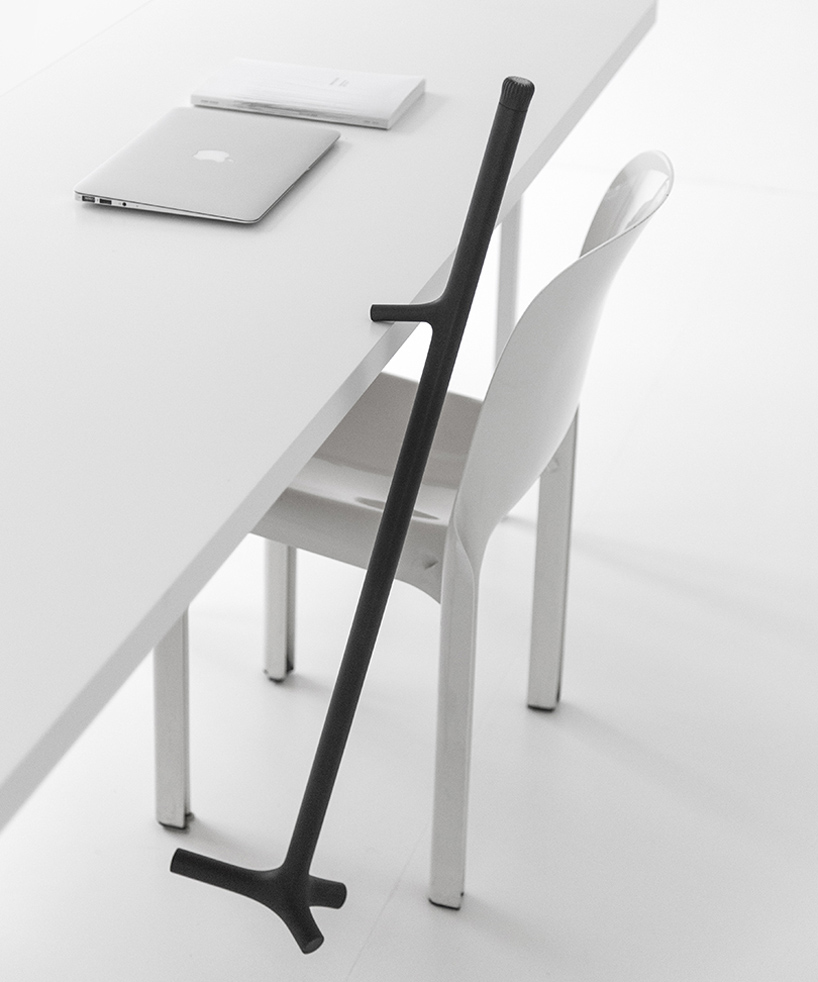
the walking stick can safely rest off the edge of any table or working surface
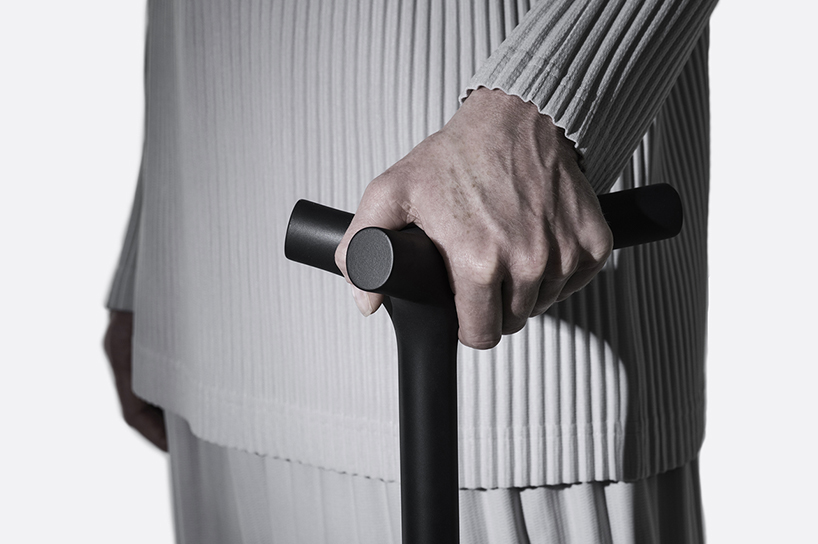
handle detail
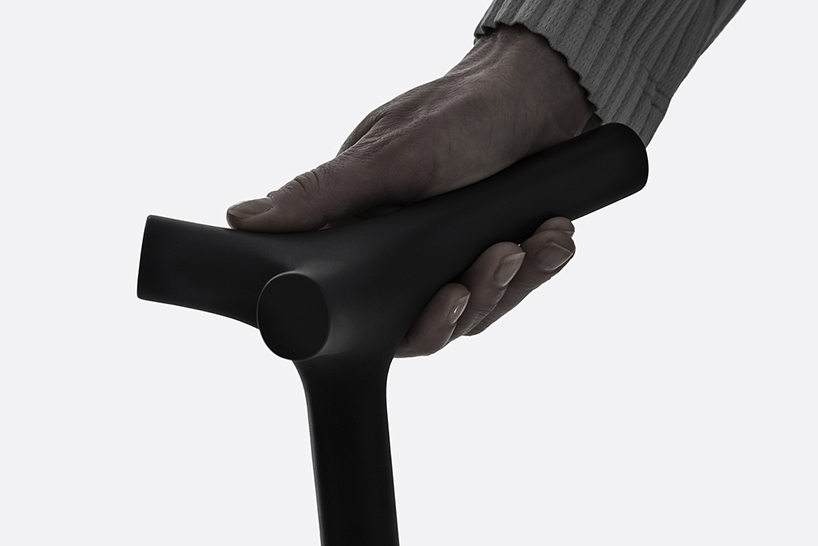
the handle offers a wide and comfortable grip aimed to reduce hand ligaments stress
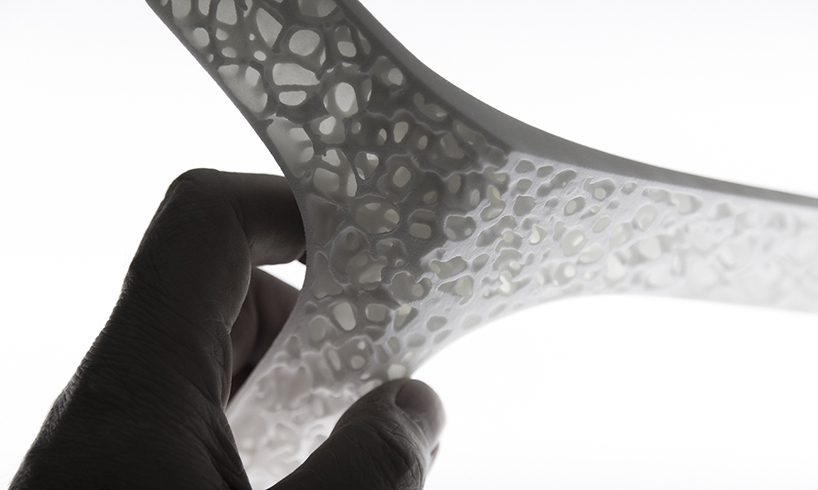
shiro studio collaborated with mhox design and arup to develop a design that could replicate a bone-like structure
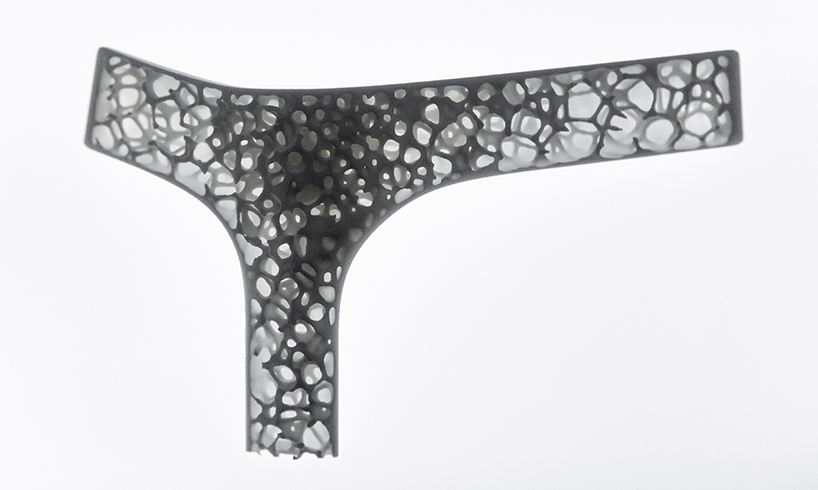
detail of the trabecular internal structure
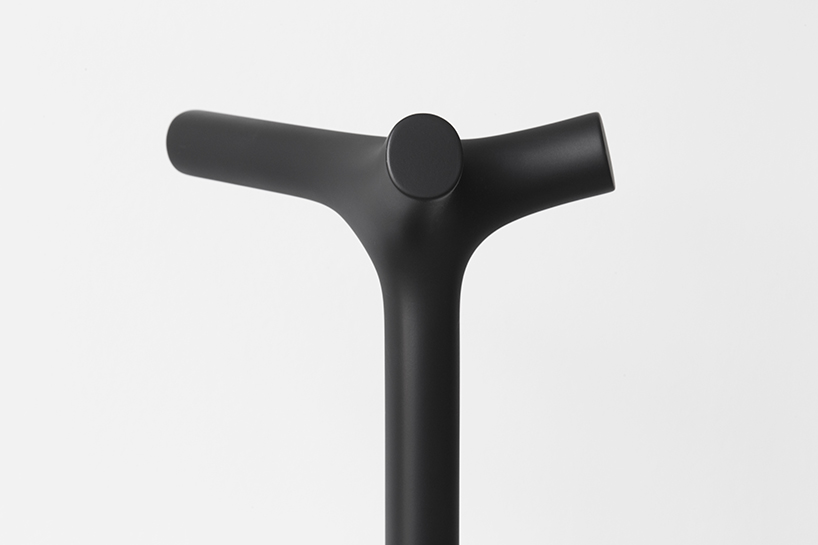
the unique tri-axis handle geometry allows its users to hold the stick in two different ways
designboom has received this project from our ‘DIY submissions‘ feature, where we welcome our readers to submit their own work for publication. see more project submissions from our readers here.
edited by: isabel narea | designboom
